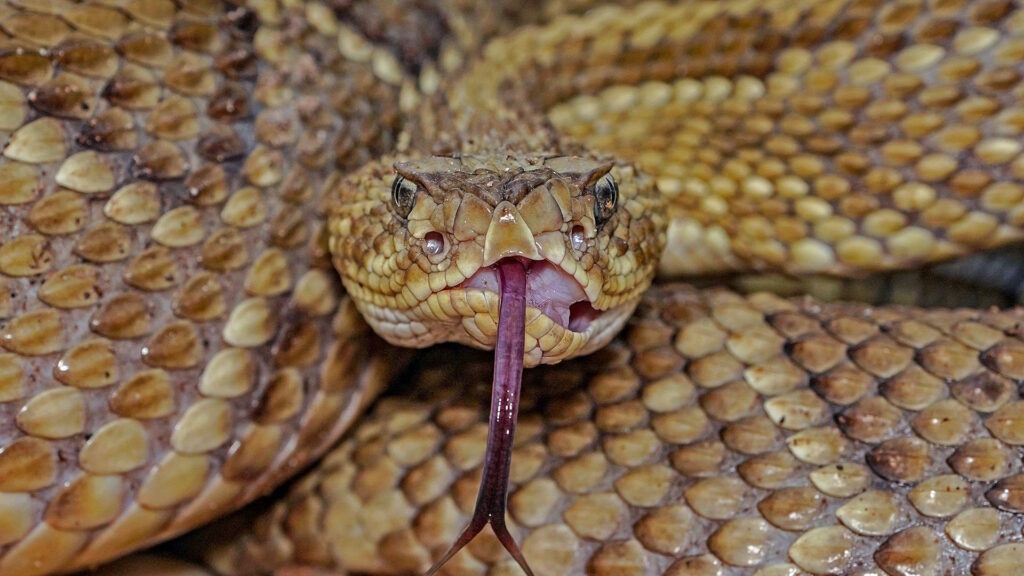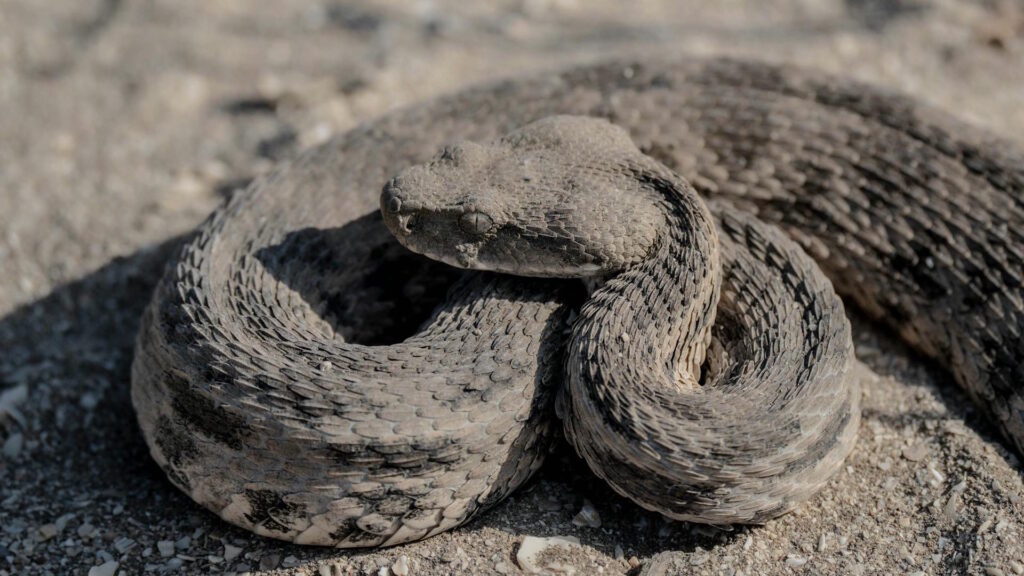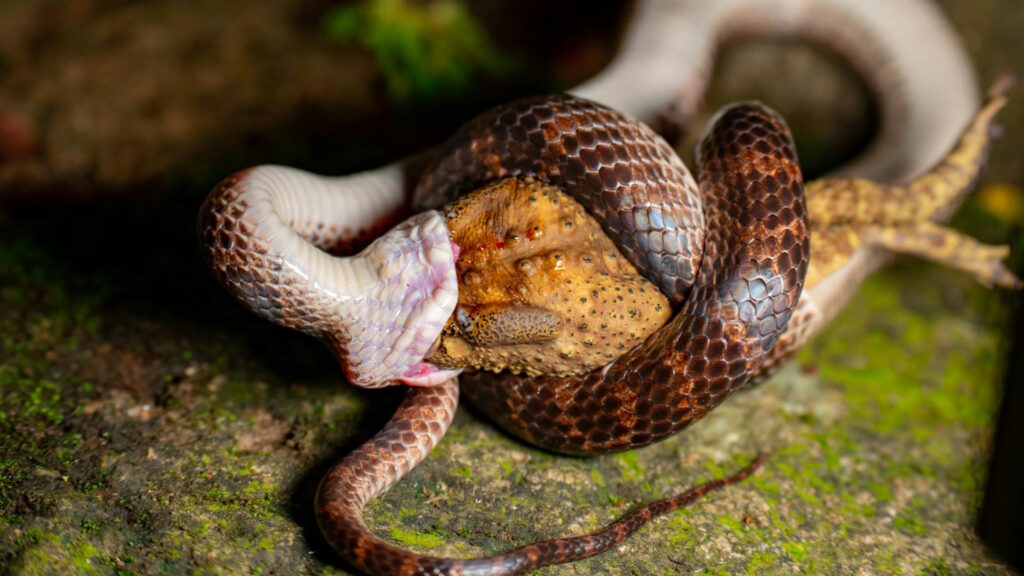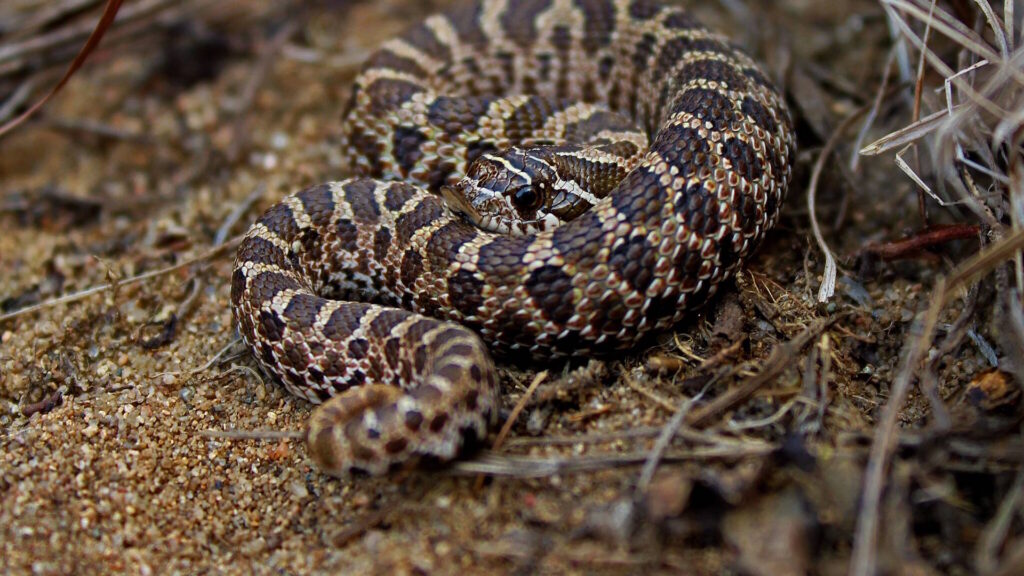Snake venom ranks among nature’s most sophisticated biochemical weapons, evolving over millions of years to incapacitate prey and defend against threats. While all venoms are complex, those causing rapid internal hemorrhaging represent some of the most immediately deadly substances on Earth. These hemorrhagic venoms can break down blood vessel walls, prevent clotting, and trigger massive internal bleeding—sometimes within minutes of envenomation. The speed and efficiency with which these venoms dismantle the body’s circulatory infrastructure reveals the remarkable evolutionary arms race between predator and prey. Understanding the mechanisms of these fast-acting toxins not only illuminates fascinating biological adaptations but also drives the development of lifesaving antivenom treatments and potential medical applications.
The Complex Composition of Hemorrhagic Snake Venom

Snake venoms that cause rapid internal bleeding are not simple toxins but rather sophisticated cocktails containing dozens to hundreds of specialized proteins and enzymes. These complex mixtures typically include metalloproteinases, serine proteases, phospholipases, and disintegrins—each component with specific roles in breaking down tissues and disrupting normal blood function. The metalloproteinases in particular are crucial for hemorrhagic effects, as they directly attack the basement membrane of blood vessels, causing them to rupture and leak. What makes these venoms particularly dangerous is their synergistic nature; multiple components work together, amplifying each other’s effects for maximum damage to the prey’s system. Species like the saw-scaled viper possess venoms with over 100 different proteins, making them not just weapons but sophisticated pharmaceutical factories evolved specifically for hunting and defense.
Metalloproteinases: The Vascular Wrecking Cre

Snake venom metalloproteinases (SVMPs) function as the primary agents responsible for the rapid hemorrhagic effects observed in victims of certain snake bites. These zinc-dependent enzymes specifically target and degrade the proteins that maintain blood vessel integrity, including collagen, laminin, and other components of the basement membrane that supports vascular walls. When SVMPs attack these structural proteins, they essentially dissolve the “glue” holding blood vessels together, causing them to weaken and eventually rupture under normal blood pressure. The efficiency of these enzymes is remarkable—in experimental studies, purified SVMPs can cause visible hemorrhaging in tissue samples within minutes of application. Different snake species produce various subtypes of these enzymes with distinct specificities and potencies, explaining why some snakes like the fer-de-lance and saw-scaled vipers are notorious for causing catastrophic bleeding while others do not.
Disrupting the Clotting Cascade

While some venom components directly attack blood vessels, others target the body’s blood clotting mechanisms, creating a perfect storm for internal hemorrhage. Snake venoms often contain procoagulant enzymes that initially trigger widespread clotting throughout the bloodstream, rapidly depleting the body’s finite supply of clotting factors in a phenomenon called consumption coagulopathy. Once these clotting factors are exhausted, the victim enters a dangerous anticoagulant state where even minor internal injuries cannot be sealed, leading to diffuse bleeding throughout the body. Other venom components like fibrinogenases directly break down fibrinogen, the precursor to fibrin—the protein that forms the mesh of blood clots. Some species, particularly vipers from the Bothrops genus, have venom that contains both hemorrhagic metalloproteinases and potent coagulation disruptors, creating a two-pronged attack that can cause fatal bleeding within hours of envenomation.
Platelet Destruction and Dysfunction

Platelets serve as the body’s first-line defenders against bleeding, rapidly aggregating at sites of vascular injury to form temporary plugs that stem blood loss. Certain snake venoms contain specialized components that either destroy platelets entirely or severely impair their function. Disintegrins, a class of small proteins found in many viper venoms, bind tightly to receptors on platelet surfaces, preventing them from adhering to damaged blood vessel walls or to each other. C-type lectins, another venom component, can cause platelets to clump inappropriately in circulation rather than at injury sites, effectively removing them from service when they’re most needed. The Russell’s viper, responsible for thousands of deaths annually across South Asia, produces venom particularly rich in platelet-disrupting factors that can reduce functional platelet counts by over 90% within hours of a bite. With vessel walls compromised by metalloproteinases and platelet function disabled, even minor internal injuries can lead to unstoppable bleeding.
The Deadly Efficiency of Viper Venoms

Vipers have evolved some of the most rapidly acting hemorrhagic venoms in the snake world, with species like the saw-scaled viper (Echis genus) capable of causing fatal internal bleeding within hours of envenomation. Their venom delivery system features long, hinged fangs that fold against the roof of the mouth when not in use, allowing for deep tissue penetration and efficient venom injection. Unlike some elapids that rely primarily on neurotoxins, vipers typically employ a “demolition” strategy, using hemorrhagic enzymes to cause massive tissue destruction and internal bleeding that immobilizes prey through shock and blood loss. The relatively large venom glands of vipers can produce substantial quantities of venom—an adult Bothrops asper (fer-de-lance) can inject over 100mg of venom in a single bite, enough to cause severe hemorrhaging in multiple human adults. Evolutionary adaptations have optimized viper venom specifically for mammalian prey, making these snakes particularly dangerous to humans who encounter them.
Geographic Distribution of Hemorrhagic Venoms

Snakes with potent hemorrhagic venoms are not evenly distributed around the world, with certain regions facing significantly higher risks from these species. The Viperidae family, which includes rattlesnakes, saw-scaled vipers, and lanceheads, dominates regions like Central and South America, sub-Saharan Africa, and parts of Asia, introducing geographic patterns to hemorrhagic snakebite risk. The medical infrastructure in many of these regions often struggles to provide timely access to appropriate antivenoms, compounding the danger posed by these fast-acting venoms. Local ecological conditions appear to influence the evolution of hemorrhagic potency, with tropical regions generally hosting species with more potent hemorrhagic venom components than temperate regions. Interestingly, island populations of venomous snakes often show reduced hemorrhagic potency compared to their mainland counterparts, possibly reflecting differences in prey availability and competitive pressures during their evolutionary history.
The Race Against Time: Treating Hemorrhagic Snakebite

When facing a bite from a snake with potent hemorrhagic venom, medical treatment becomes a desperate race against time as internal bleeding can begin within minutes and escalate to life-threatening levels within hours. Antivenom remains the only specific treatment for neutralizing venom components, but its effectiveness diminishes rapidly as time passes after the bite, with some studies suggesting that for every hour of delay, mortality rates increase by 1-10% depending on the species involved. Modern treatment protocols typically combine antivenom administration with supportive measures such as blood transfusions, clotting factor replacement, and careful fluid management to maintain circulatory function while the body eliminates the venom. Field interventions have evolved significantly, moving away from outdated practices like tourniquets and incisions toward immobilization of the affected limb and rapid transport to medical facilities. For remote areas with limited healthcare access, some researchers are developing stable, powdered antivenom formulations and simplified delivery methods that could be administered by minimally trained personnel, potentially saving thousands of lives in regions plagued by hemorrhagic snakebite.
Evolutionary Advantages of Hemorrhagic Venom

The evolution of hemorrhagic venom components represents a remarkable adaptation that provides distinct hunting advantages to the snakes that possess them. By causing rapid internal bleeding and tissue damage, these venoms efficiently immobilize prey without requiring the snake to maintain a dangerous grip during the prey’s death throes, reducing injury risk to the predator. The speed with which hemorrhagic venoms act also allows snakes to release prey after biting and track them efficiently as they weaken and eventually succumb, conserving energy that would otherwise be spent subduing struggling prey. This “bite-and-release” hunting strategy proves particularly advantageous for ambush predators like vipers that often hunt in complex environments where maintaining a grip on prey could be challenging or dangerous. Evolutionary biologists have noted that hemorrhagic venom components appear to have evolved independently multiple times across different snake lineages, suggesting their significant adaptive value in predator-prey dynamics across diverse ecological contexts.
From Deadly Weapon to Medical Marvel

Despite their deadly potential, the highly specific proteins in hemorrhagic snake venoms have become valuable tools in medical research and treatment development. Scientists have isolated and modified venom components to create medications like eptifibatide (derived from pygmy rattlesnake venom) and tirofiban (based on saw-scaled viper venom), which prevent unwanted blood clotting in heart attack patients by precisely targeting platelet aggregation. Other hemorrhagic venom components are being investigated for their potential to dissolve blood clots in stroke patients, offering possible alternatives to current treatments with fewer side effects. Researchers studying cancer have found that certain metalloproteinases from snake venom can be modified to selectively attack tumor blood vessels while sparing healthy tissue, potentially creating targeted cancer therapies. The exquisite specificity with which these venom components target different elements of the circulatory system provides medical researchers with natural templates for designing drugs with precision mechanisms of action, turning deadly toxins into lifesaving medicines.
Diagnostic Features of Hemorrhagic Envenomation

Recognizing the signs of hemorrhagic snake envenomation quickly can be lifesaving, as the unique progression of symptoms helps medical providers identify the appropriate treatment approach. Initial symptoms typically include immediate pain, swelling, and bruising at the bite site, followed by the development of ecchymosis (discoloration due to blood leaking from vessels) that spreads rapidly through the affected limb. As systemic effects develop, patients may exhibit bleeding from the gums, unusual bruising at locations far from the bite site, blood in urine or stool, and in severe cases, internal bleeding into body cavities or the brain. Laboratory tests reveal characteristic patterns including prolonged clotting times, reduced platelet counts, elevated fibrin degradation products, and decreased fibrinogen levels—collectively pointing to the widespread disruption of normal clotting mechanisms. These diagnostic features differ significantly from the neurotoxic presentations seen with elapid (cobra, mamba, coral snake) bites, which typically cause neurological symptoms like drooping eyelids, difficulty speaking, and respiratory distress without significant bleeding, allowing medical teams to select the appropriate antivenom even when the snake species hasn’t been identified.
The Most Dangerous Hemorrhagic Venoms Worldwide

Among the world’s most dangerous snakes with hemorrhagic venoms, the saw-scaled vipers (Echis genus) stand out for their lethal efficiency and widespread distribution across Africa, the Middle East, and South Asia, causing more human deaths annually than perhaps any other snake genus. The fer-de-lance (Bothrops asper) of Central and South America possesses venom that combines powerful tissue-destroying enzymes with compounds that trigger both immediate and delayed hemorrhagic effects, making it responsible for the majority of fatal snakebites in its range. Russell’s viper (Daboia russelii), found across South and Southeast Asia, delivers venom that not only causes massive internal bleeding but also triggers kidney failure and pituitary gland destruction, creating a cascade of life-threatening conditions that can persist even after initial treatment. The Eastern diamond-backed rattlesnake (Crotalus adamanteus) of the southeastern United States possesses the largest venom yield of any rattlesnake, with powerful hemorrhagic components that can cause extensive tissue destruction and internal bleeding even with a relatively brief contact during a defensive strike. What makes these species particularly dangerous is not just the potency of their venom but also their tendency to inhabit areas close to human settlements, increasing encounter rates with people who may have limited access to proper medical care.
Variations in Individual Response to Hemorrhagic Venoms

The severity and progression of hemorrhagic snakebite envenomation can vary dramatically between victims even when bitten by the same species, reflecting complex interactions between venom components and individual biological factors. Children and elderly individuals typically experience more severe effects due to smaller body mass and reduced physiological reserves, with children particularly vulnerable to rapid blood loss due to their lower total blood volume. Pre-existing medical conditions significantly influence outcomes, with patients taking anticoagulant medications facing greatly increased bleeding risks, while those with liver disease may have already compromised clotting factor production. Genetic variations in blood clotting pathways and inflammatory responses can make some individuals inherently more resistant or susceptible to certain venom components, explaining why two similarly-sized adults might show drastically different symptom progression from comparable bites. The bite location also plays a crucial role in determining how quickly hemorrhagic effects develop, with bites to highly vascularized areas like the face or neck potentially causing life-threatening bleeding much faster than bites to extremities where compression and reduced blood flow can temporarily limit venom distribution.
Future Directions in Understanding and Treating Hemorrhagic Venoms

The future of hemorrhagic venom research promises significant advances in both our understanding of these complex toxins and our ability to treat their effects. Next-generation proteomics and genomic techniques are enabling researchers to identify and characterize previously unknown venom components, potentially revealing new therapeutic targets for antivenom development. Novel antivenom production methods using synthetic antibody technologies could eliminate the current dependence on animal immunization, potentially creating more consistent and safer treatments with fewer allergic reactions. Some research teams are exploring universal hemostatic agents that could temporarily stabilize victims of any hemorrhagic snakebite until specific antivenom can be administered, addressing the critical time-dependent nature of these envenomations. Emerging portable diagnostic tools using microfluidic technology might soon allow field assessment of specific venom components present in a bite, enabling more targeted treatment approaches even in remote settings. As climate change and habitat disruption alter snake distributions worldwide, understanding the geographic patterns of hemorrhagic venom composition becomes increasingly important for public health planning and antivenom distribution strategies in regions where these deadly snakes may appear for the first time.
Conclusion

The rapid internal bleeding caused by certain snake venoms represents one of nature’s most perfectly engineered weapons—a testament to millions of years of evolutionary refinement. These complex biochemical cocktails target multiple vulnerabilities in the circulatory system simultaneously, from degrading blood vessel walls to disabling clotting mechanisms and destroying platelets. The speed with which these venoms act—sometimes causing life-threatening hemorrhage within minutes—highlights both their danger to humans and their effectiveness as predatory adaptations. Yet this same deadly efficiency that makes these venoms so dangerous also makes them invaluable to medical science, providing precisely targeted tools for treating cardiovascular disease and potentially developing new cancer therapies. As research continues to unravel the complex mechanisms of hemorrhagic venoms, we gain not only better treatments for snakebite victims but also deeper insights into the fundamental processes that maintain our circulatory health.




